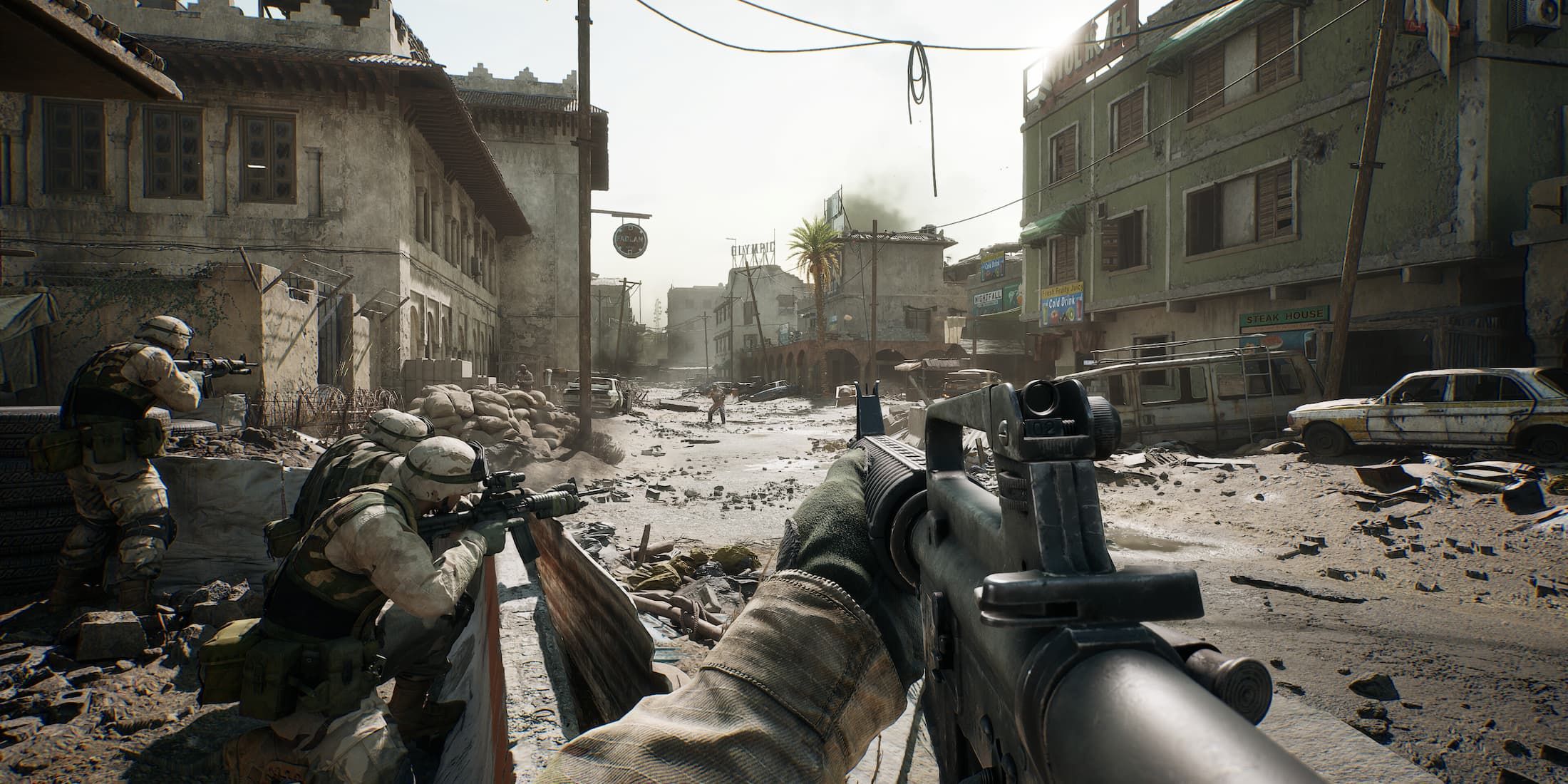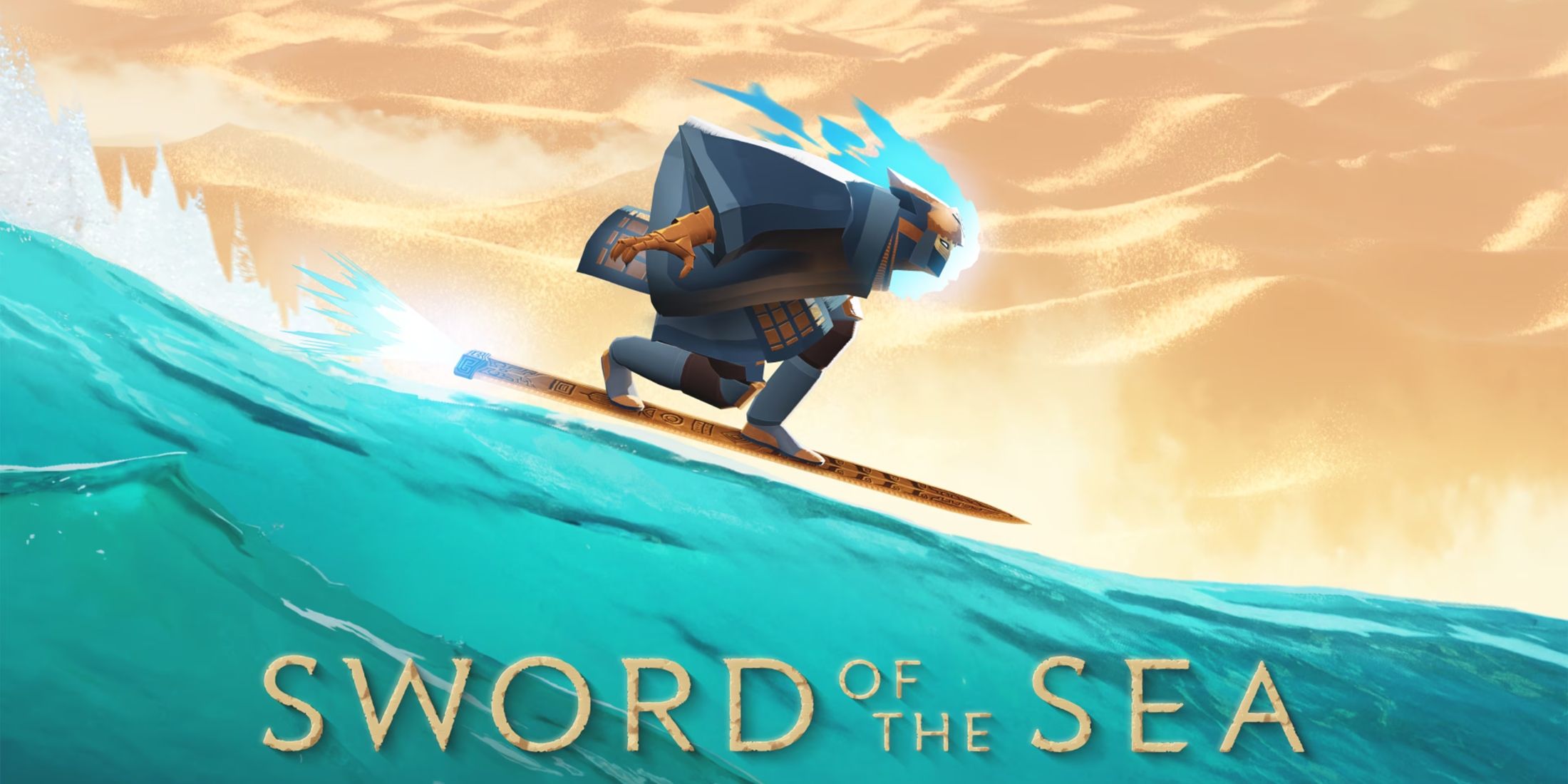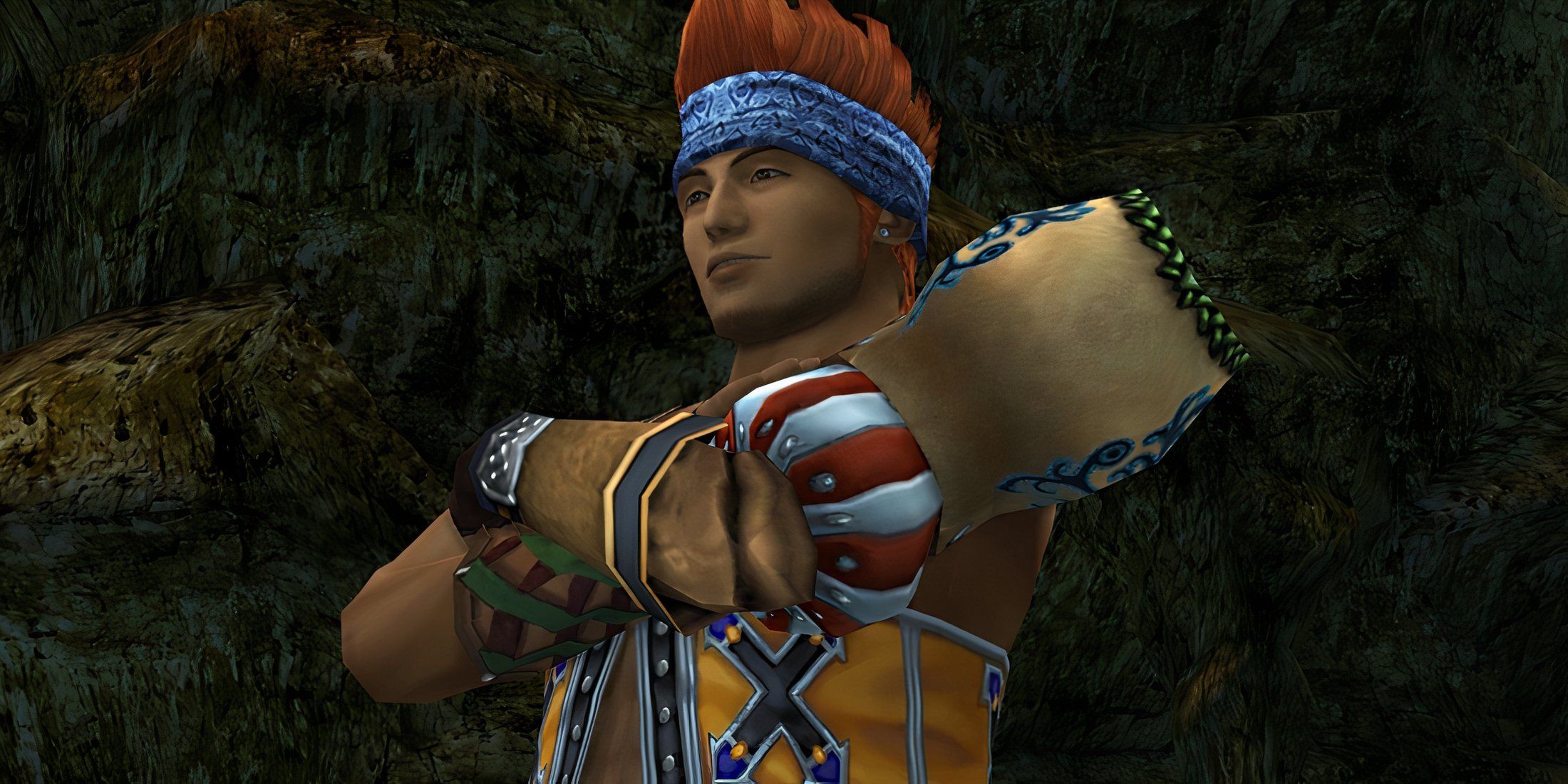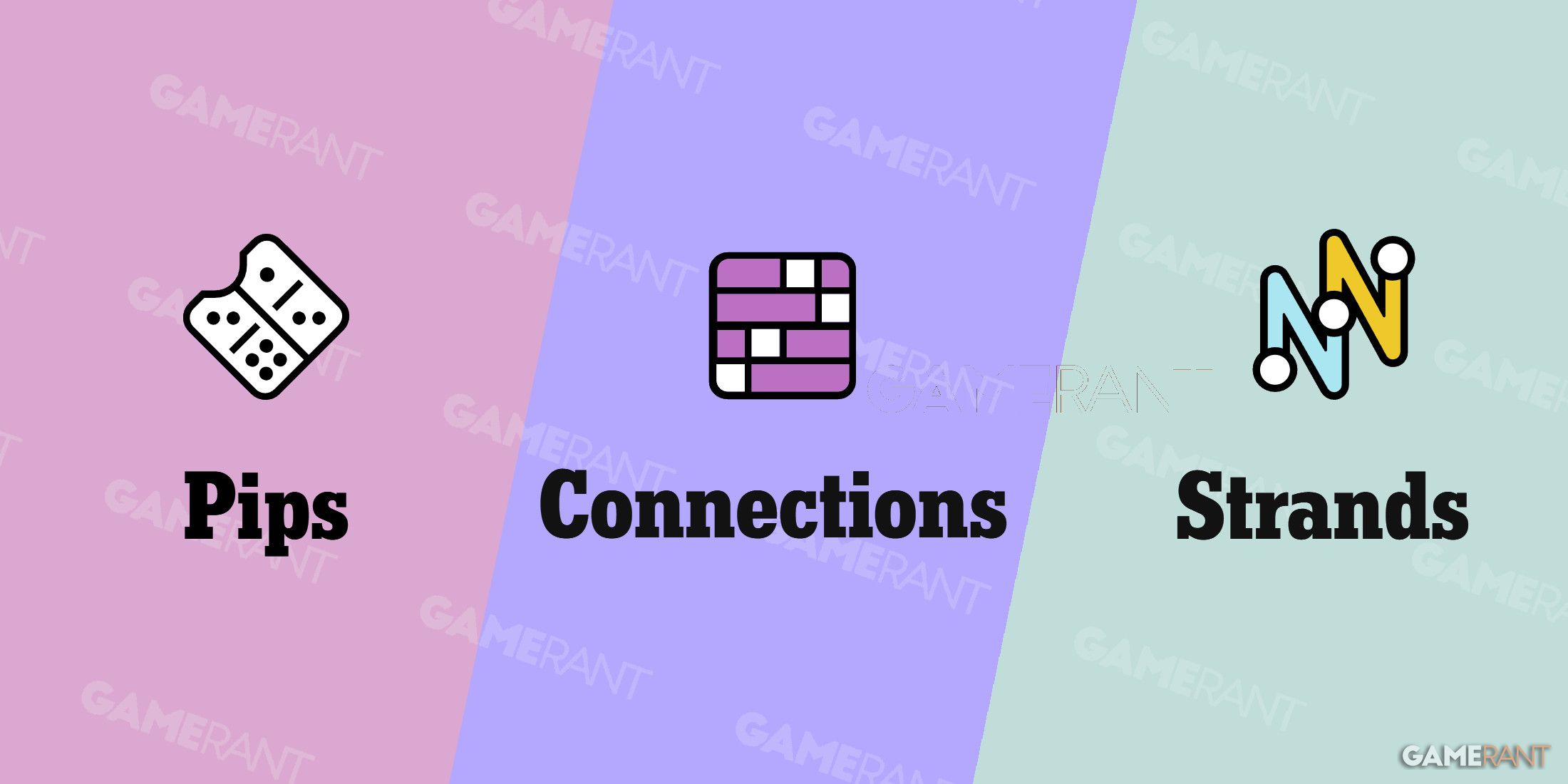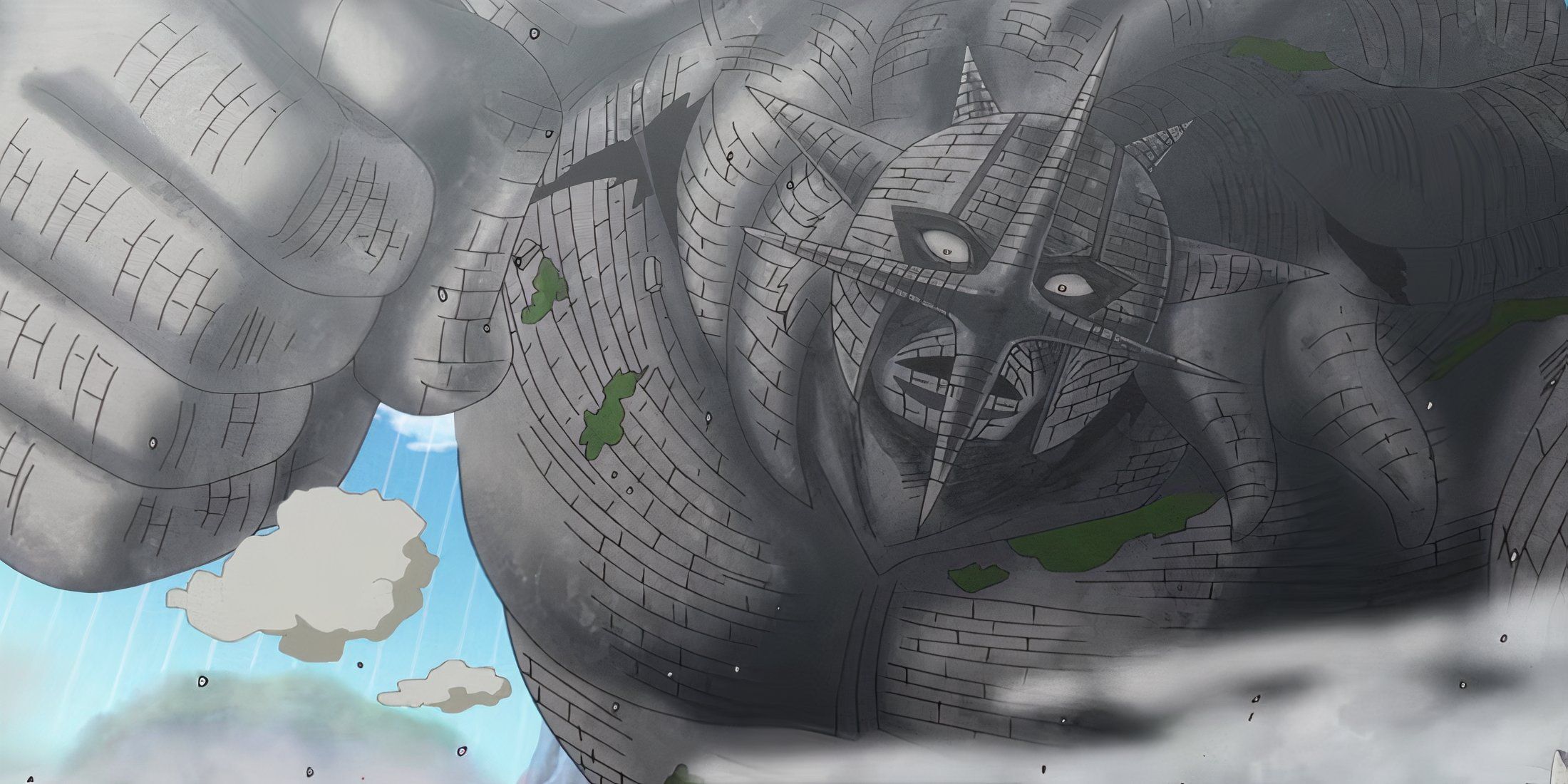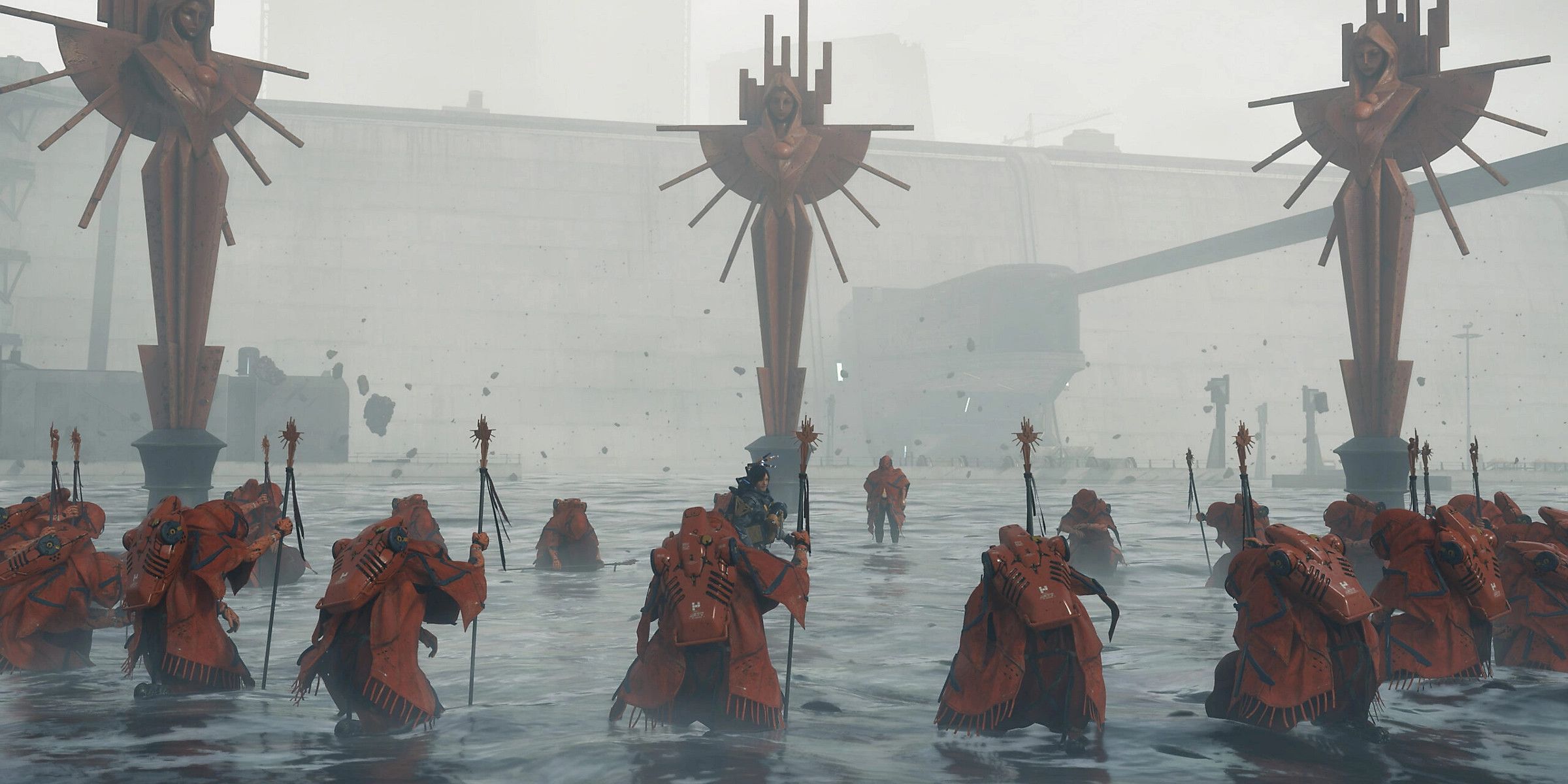Founded by the Art Director of 2009’s Flower and 2012’s Journey, developer Giant Squid has put out a steady stream of sleeper hits over the last decade or so. 2016’s Abzu was a contemplative underwater adventure, 2020’s The Pathless was a more action-focused experience, and Giant Squid’s latest venture, Sword of the Sea, is a wonderful blend of the studio’s past and present.
Another compact adventure, Sword of the Sea puts meditative vibes above all else, but its gameplay is more than robust enough to keep players hooked for the entirety of its succinct runtime.
Sword of the Sea Is a Sleek, Streamlined Adventure
Sword of the Sea opens with a mesmerizing shot of a swirling pool of water. The camera follows one runaway drop of this ethereal liquid as it gracefully falls on top of a stone statue, gradually filling it with life. This now-living statue is Sword of the Sea‘s player-character, an ancient warrior who’s tasked with restoring this dry, desolate world to its former underwater glory. With their trusty sword-shaped surfboard in hand, players set off to explore the first of Sword of the Sea‘s several well-themed biomes, a vast desert that covers an array of ancient temples.
Sword of the Sea‘s gameplay loop strikes a strong balance between the more stripped-back nature of games like Journey and Abzu, and slightly more mechanically-complex experiences like The Pathless. Players use their sword surfboard to elegantly glide through a variety of environments, overcoming very simple puzzles and platforming challenges, and “Resonating” with an object in the environment to bring water and marine life back to the surrounding area.
Though this loop is simple, it’s given some depth via Sword of the Sea‘s level design. Most of Sword of the Sea‘s stages drop players into a small open-ended area, and they’re given free rein in how they approach the level’s few objectives. There’s no objective marker, which forces players to rely on context clues in the environment and their own desire to explore the game’s clearly signposted points of interest.
Exploration is naturally encouraged through Sword of the Sea‘s optional content, with players being able to find well-written lore obelisks hidden in each level that detail the world’s history and the player-character’s mysterious origin. Players can also seek out a handful of challenge areas in each level, with some of the game’s best being Tony Hawk Pro Skater-like arenas that have players grinding on ancient rails, skating along temple walls, and performing a range of smoothly-animated airborne tricks to achieve a high score.
Completing these challenges and thoroughly exploring each level will reward players with ‘Tetra’, a resource that can be exchanged for new tricks and in-game abilities. On paper, these rewards aren’t the most exciting reasons to explore Sword of the Sea‘s varied biomes, but they’re a great excuse to keep engaging with the game’s riveting traversal mechanics.
Sword of the Sea: Tony Seal Pro Surfer
Sword of the Sea‘s ‘surfboard’ is an absolute joy to control. Players simply need to push forward, and the board will skate smoothly across a biome’s surface, gradually gaining speed on downhill slopes and reacting naturally to the terrain underneath it. Giant Squid has taken The Pathless‘ intoxicating sense of momentum and refined it even further, delivering a streamlined, seamless experience that gives Sword of the Sea a mighty foundation.
This strong foundation is then built upon consistently throughout Sword of the Sea, with each level adding at least one new traversal mechanic to the loop. These mechanics often take the form of new environmental objects that appear each time the player restores an area, such as bioluminescent jellyfish that the player can bounce on to reach new heights, and tall seaweed stalks that they can ride vertically.
Sword of the Sea‘s regular drip-feeding of new mechanics results is a perfect marriage of gameplay and narrative. The more players restore the world around them, the more gameplay benefits they’re given. And the more traversal techniques are at the player’s disposal, the more engrossing Sword of the Sea‘s moment-to-moment gameplay becomes.
Sword of the Sea‘s streamlined traversal mechanics are aided by smooth performance on PS5.
Sword of the Sea is a Truly Restorative Journey
But just as fans of Journey, Abzu, and The Pathless would expect, while Sword of the Sea‘s gameplay is thoroughly enjoyable, the game’s most impressive qualities lie in its presentation and atmosphere. Put simply, Sword of the Sea is a truly breathtaking game.
Sword of the Sea carries over the minimalist art style found in Giant Squid’s previous work. Character and animal models are given simple shapes that are defined clearly with strong linework, giving them a distinct look while letting the game’s environments take center stage. Each of Sword of the Sea‘s biomes offers a wholly unique set of visual delights, ranging from intriguing architecture to beautifully stylized surfaces that shift playfully underneath the player’s board.
Sword of the Sea also features a vibrant color palette, which is elevated at every turn by some phenomenal lighting that dances gleefully atop each biome’s terrain. The game’s dynamic camera also delivers some noteworthy assists, with it panning carefully around the player while they turn to maintain the sense of momentum, and zooming out at specific moments to hammer home a powerful sense of scale when approaching new areas.
Any given frame of Sword of the Sea is screenshot-worthy, but it’s in motion that the game’s visuals truly sing. Though, they’re not the only exceptional part of Sword of the Sea‘s presentation.
Echoes in the Wells of Silence
Minimalist like its art style, Sword of the Sea‘s audio design does a lot with very little. The quiet yet crisp sound of rushing wind accompanies the player’s every move and the subtle but satisfying tap of the metallic board on sand, rock, or ice accompanies each jump. Sword of the Sea uses its understated audio to accentuate every in-game action perfectly.
The partnership between Giant Squid and renowned BAFTA-winning composer Austin Wintory continues with Sword of the Sea, and his score steals the show once again. Wintory’s trademark sound brings a constant sense of serenity to Sword of the Sea‘s moment-to-moment gameplay, and the score’s gradual ramp-up as players gain momentum is always thrilling to experience.
Sword of the Sea‘s remarkable presentation comes together and goes hand-in-hand with gameplay to deliver an incredibly soothing and contemplative experience. Gliding effortlessly to an objective and breathing life back into the barren wasteland is endlessly fulfilling, with lush foliage and beautifully animated sea life slowly filling the area while the relaxing sound of flowing water and Wintory’s soft but powerful score fills the air.
Sword of the Sea truly feels like a restorative journey, not just in a literal sense, but in an emotional sense too. Every in-game restoration felt like I was soothing something deep inside myself, and the calm journey between objectives eased my mind, relaxed my shoulders, and reminded me to breathe. Sword of the Sea is far more than an interactive art installation; it’s a deeply satisfying journey of meditation. But that journey doesn’t last forever.
The Trance Comes to an Abrupt End
Sword of the Sea is only around two and a half hours long. That won’t come as a surprise to fans of Abzu and Journey, but it may catch new players off guard, especially given the abrupt nature of the game’s ending. Though Sword of the Sea features excellent pacing throughout the majority of its runtime, the last 15 minutes or so feel like a bit of a blur, and the ending feels a tad rushed. It’s a fun set piece and the emotional beats land fairly well, but Sword of the Sea‘s ending could have used just one or two additional levels to properly build up its finale.
Players are encouraged to stick around after the credits, however. Sword of the Sea offers a New Game Plus mode that adds a few new abilities and modifiers to the core gameplay loop. These don’t drastically change the experience, but they’re a decent incentive for players who want to experience the game’s tranquility all over again.
Sword of the Sea is coming to PlayStation Plus Extra on launch day.
Sword of the Sea is the epitome of short and sweet. All aspects of the game’s presentation, from visuals to audio design to score, are the best they possibly could be, and they all go hand in hand with the game’s exceptionally smooth and engaging traversal mechanics to deliver a peaceful, introspective experience that’s more than deserving of just about anyone’s time.
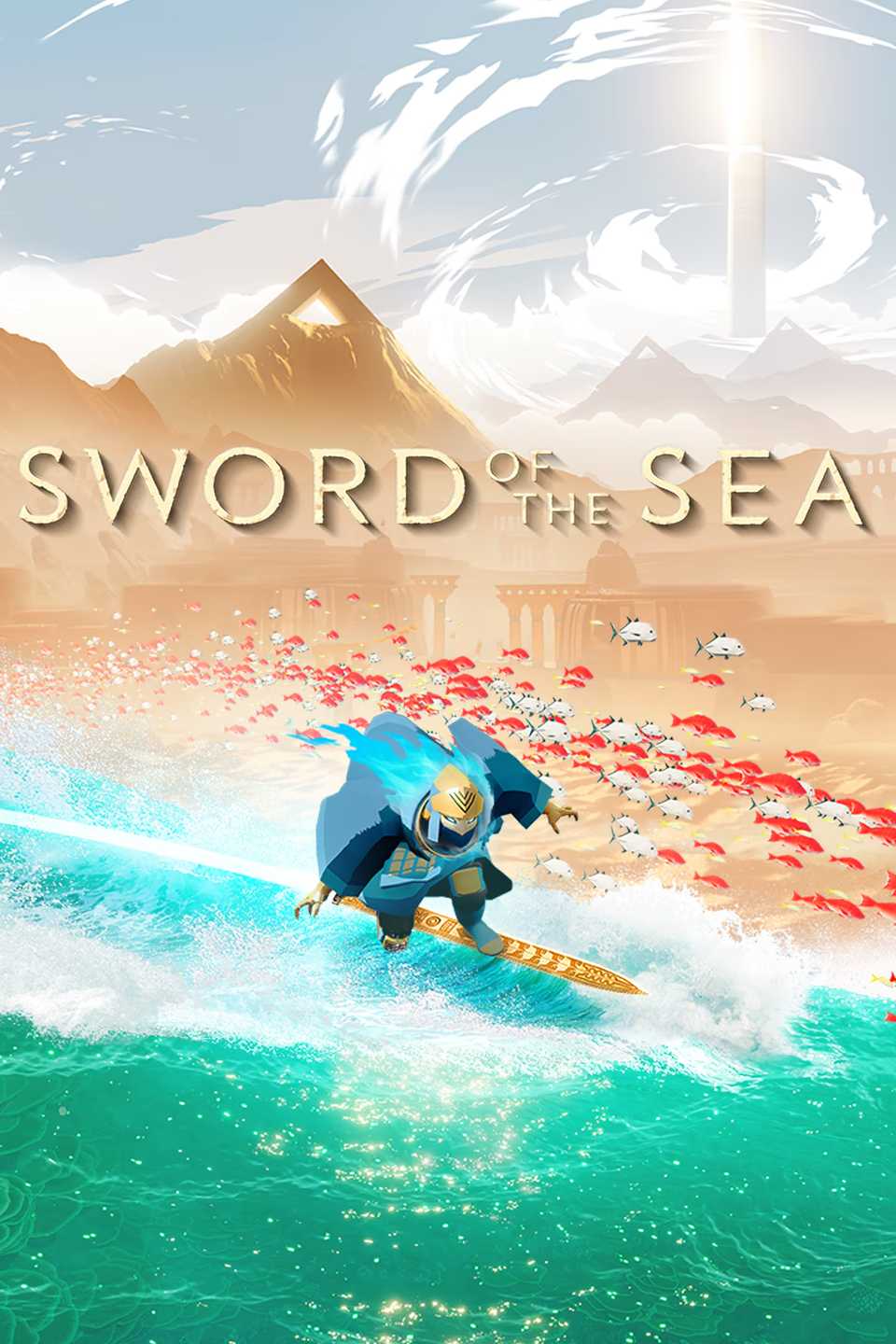
Sword of the Sea
Reviewed on PS5


- Released
-
August 19, 2025
- ESRB
-
Everyone 10+ / Fantasy Violence
- Developer(s)
-
Giant Squid
- Publisher(s)
-
Giant Squid
- Number of Players
-
Single-player
- Steam Deck Compatibility
-
Unknown
- Streamlined and engaging traversal mechanics
- Excellent visuals, audio design, and score
- Contemplative atmosphere is incredibly relaxing
- Ending feels a bit rushed
Sword of the Sea is available now for PC and PS5. Game Rant was provided a PS5 code for this review.




